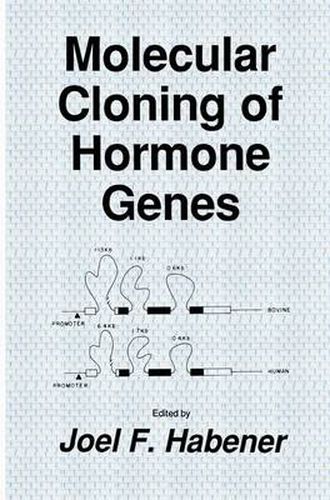Readings Newsletter
Become a Readings Member to make your shopping experience even easier.
Sign in or sign up for free!
You’re not far away from qualifying for FREE standard shipping within Australia
You’ve qualified for FREE standard shipping within Australia
The cart is loading…






This title is printed to order. This book may have been self-published. If so, we cannot guarantee the quality of the content. In the main most books will have gone through the editing process however some may not. We therefore suggest that you be aware of this before ordering this book. If in doubt check either the author or publisher’s details as we are unable to accept any returns unless they are faulty. Please contact us if you have any questions.
The peptide hormones are small proteins that regulate cellular metabolism through their specific interactions with tissues of the endocrine, nervous, and immune systems, as well as in embry onic development. During the past ten years, refinements in the techniques of recombinant DNA technology have resulted in the cloning of genes encoding approximately 50 different hormonal and regulatory peptides, including those in which the peptides themselves and the mRNAs encoding the peptides are present in only trace amounts in the tissues of origin. In addition to provid ing the coding sequences of recognized hormonal and regulatory peptides, gene sequencing has uncovered new bioactive peptides encoded in the precursor pro hormones that are then liberated along with the hormonal peptides during cellular cleavages of the precursors. The encoding of multiple peptides in a single mono cistronic mRNA appears to be a genetic mechanism for the gener ation of biologic diversification without requiring amplification of gene sequences. Two of the objectives in the assembly of this book are to pre sent, in one volume, the known primary structures of the genes encoding several of the polypeptide hormones and related regulatory peptides, and to provide an account of the various ap proaches that have been used to identify and select the cloned genes encoding these polypeptides. The contents of the two in troductory chapters are intended to provide the reader with a brief background of the approaches to gene cloning and the struc ture and expression of hormone-encoding genes.
$9.00 standard shipping within Australia
FREE standard shipping within Australia for orders over $100.00
Express & International shipping calculated at checkout
This title is printed to order. This book may have been self-published. If so, we cannot guarantee the quality of the content. In the main most books will have gone through the editing process however some may not. We therefore suggest that you be aware of this before ordering this book. If in doubt check either the author or publisher’s details as we are unable to accept any returns unless they are faulty. Please contact us if you have any questions.
The peptide hormones are small proteins that regulate cellular metabolism through their specific interactions with tissues of the endocrine, nervous, and immune systems, as well as in embry onic development. During the past ten years, refinements in the techniques of recombinant DNA technology have resulted in the cloning of genes encoding approximately 50 different hormonal and regulatory peptides, including those in which the peptides themselves and the mRNAs encoding the peptides are present in only trace amounts in the tissues of origin. In addition to provid ing the coding sequences of recognized hormonal and regulatory peptides, gene sequencing has uncovered new bioactive peptides encoded in the precursor pro hormones that are then liberated along with the hormonal peptides during cellular cleavages of the precursors. The encoding of multiple peptides in a single mono cistronic mRNA appears to be a genetic mechanism for the gener ation of biologic diversification without requiring amplification of gene sequences. Two of the objectives in the assembly of this book are to pre sent, in one volume, the known primary structures of the genes encoding several of the polypeptide hormones and related regulatory peptides, and to provide an account of the various ap proaches that have been used to identify and select the cloned genes encoding these polypeptides. The contents of the two in troductory chapters are intended to provide the reader with a brief background of the approaches to gene cloning and the struc ture and expression of hormone-encoding genes.